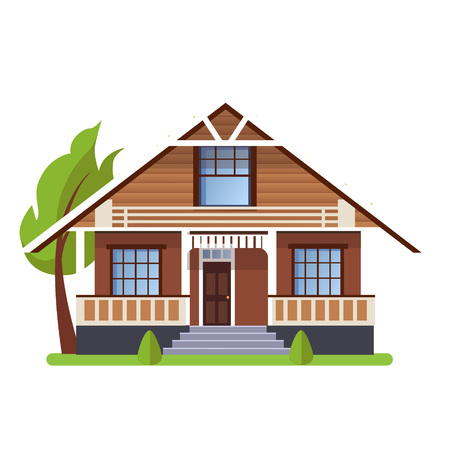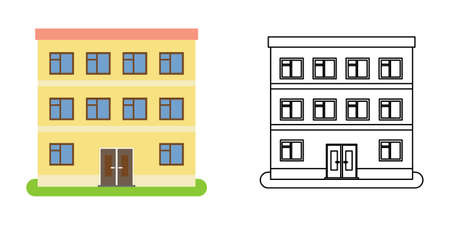Understanding Your Home’s Existing Energy Use
If you live in an older home, you might notice higher utility bills or rooms that never feel quite comfortable. Before making any upgrades, it’s important to understand how your house currently uses energy and where it tends to waste it. This step sets the foundation for smart, cost-effective retrofits.
Start with a Home Energy Assessment
Think of a home energy assessment as a check-up for your house. You can do a basic version yourself or hire a professional for a more detailed look. Here are some common areas to inspect:
- Windows and Doors: Feel for drafts or look for condensation, which suggests poor insulation.
- Insulation: Check the attic, walls, and basement for thin or missing insulation.
- Heating and Cooling Systems: Notice if your furnace or AC is running often or making strange noises.
- Appliances: Find out the age and efficiency ratings of large appliances like refrigerators, ovens, and water heaters.
- Lighting: See if you’re still using old incandescent bulbs instead of LEDs.
Common Inefficiencies in Older Homes
| Area | What to Look For | Potential Issues |
|---|---|---|
| Windows & Doors | Single-pane glass, gaps, loose frames | Heat loss in winter, heat gain in summer, drafts |
| Insulation | Sparse attic insulation, uninsulated walls or floors | Inefficient heating/cooling, cold spots |
| HVAC Systems | Aging units (15+ years), constant cycling on/off | High energy use, inconsistent temperatures |
| Appliances | No ENERGY STAR label, manufactured before 2000s | Inefficient operation, higher electricity costs |
| Lighting | Incandescent bulbs, halogen lamps | More electricity used than necessary |
Tackling the Basics First Pays Off
You don’t need to spend big right away. Start by sealing up obvious leaks around windows and doors with weatherstripping or caulk. Swap out old light bulbs for LEDs. These simple fixes can make your home feel more comfortable and start saving you money immediately.
Your Next Step: Gather Data and Make a Plan
Take notes as you inspect each area of your home. Even snapping photos on your phone can help track what needs attention. With this information in hand, you’ll be ready to prioritize which retrofits will make the biggest impact on both comfort and savings.
2. Setting a Realistic Smart Retrofit Budget
Retrofitting an older home for smart energy efficiency is exciting, but it’s important to set a budget that works for you and your household. Here’s how to figure out what you can afford, decide which upgrades matter most, and make sure you’re getting the best deal by tapping into U.S. rebates or incentives.
Step 1: Assess Your Finances
Start by looking at your finances. Ask yourself how much you can realistically set aside for home improvements right now without stretching your budget too thin. It helps to review recent bank statements and your monthly expenses so you know exactly what’s available.
Sample Budget Worksheet
| Item | Estimated Cost | Your Budgeted Amount |
|---|---|---|
| Smart Thermostat | $120–$250 | |
| LED Lighting Upgrades | $100–$300 | |
| Smart Plugs/Switches | $80–$200 | |
| Home Energy Monitor | $150–$350 | |
| Total Estimated Cost | $450–$1,100 |
This worksheet gives you a ballpark idea of what common smart upgrades cost. Fill in “Your Budgeted Amount” to see how things line up with your finances.
Step 2: Prioritize Your Upgrades
If your budget doesn’t cover everything on your wish list, prioritize. Which upgrades will save you the most money or make your life easier? For many homeowners, starting with a smart thermostat or swapping out old lights for LEDs makes a big impact both financially and comfort-wise.
Prioritizing Example Table
| Upgrade Option | Impact on Savings/Comfort (Low/Medium/High) | Priority (1-5) |
|---|---|---|
| Smart Thermostat | High | |
| LED Lighting | Medium | |
| Smart Plugs/Switches | Medium | |
| Home Energy Monitor | Low-Medium | |
| Weatherstripping & Sealing Air Leaks* | High* |
*Not a “smart” upgrade, but often recommended as part of energy retrofits in older homes.
Step 3: Research Rebates and Incentives in the U.S.
The good news is that there are many rebates and incentive programs across the U.S. that can help lower your out-of-pocket costs. Look into:
- Federal Tax Credits: The Inflation Reduction Act offers credits for certain energy-efficient home upgrades.
- State & Local Programs: Many states, cities, and utility companies offer their own rebates for things like smart thermostats or efficient lighting.
Where to Search for Rebates:
- ENERGY STAR Rebate Finder Tool
- Your local utility company’s website (search for “rebates” or “incentives” section)
If you find a rebate or incentive that matches your planned upgrade, factor that into your budget. Sometimes this means you can afford an even better product, or just save more money overall!
Step 4: Build In a Buffer for Surprises
No retrofit project goes perfectly—especially with older homes! Set aside about 10–15% of your total budget for unexpected costs like wiring fixes or discovering outdated insulation behind the walls.
A Quick Recap Table for Budget Planning Steps:
| Step # | Description |
|---|---|
| 1 | Assess finances and set maximum spend limit. |
| 2 | Create a wishlist and prioritize key upgrades. |
| 3 | Research and apply for rebates/incentives. |
| 4 | Add a buffer for surprises (10–15%). |
The more careful you are with planning, the less stressful—and more rewarding—your smart retrofit journey will be!

3. Upgrading Core Infrastructure for Smart Tech
If your home was built before the smart tech boom, chances are its core infrastructure may not fully support today’s energy-efficient devices. Upgrading key elements like wiring, outlets, and internet connectivity is crucial if you want to make the most of smart home technology. Here’s how to get started:
Wiring: The Backbone of Modern Devices
Older homes often have outdated wiring that cant handle the power needs or safety requirements of smart devices. Knob-and-tube or aluminum wiring, for example, can be a fire hazard and is not compatible with many modern systems. Hiring a licensed electrician to inspect and, if necessary, upgrade your electrical wiring will ensure your home is safe and ready for high-tech additions.
Signs You Might Need a Wiring Upgrade:
| Sign | What It Means |
|---|---|
| Frequent blown fuses or tripped breakers | Your system may be overloaded |
| Flickering or dimming lights | Poor connections or insufficient power flow |
| No ground wires in outlets | Lack of modern safety features |
Outlets: Powering Your Smart Home
Smart plugs, outlets with USB ports, and surge protectors are standard in new builds but rare in older homes. Swapping out old two-prong outlets for grounded three-prong versions allows you to use more smart devices safely. Adding GFCI (Ground Fault Circuit Interrupter) outlets in kitchens, bathrooms, and basements is also a must for safety and code compliance.
Upgrade Options for Outlets:
| Type of Outlet | Main Benefit |
|---|---|
| Standard 3-Prong Outlet | Improved compatibility and grounding |
| USB Combo Outlet | Direct charging for phones/tablets |
| Smart Outlet | Remote control and energy monitoring |
Internet Connectivity: The Heartbeat of Smart Tech
A strong and reliable internet connection is essential for smart thermostats, cameras, lighting, and appliances. Many older homes have thick walls or layouts that can create Wi-Fi dead zones. Upgrading your router or adding a mesh Wi-Fi system can dramatically improve coverage throughout your home.
Tips for Better Internet Coverage:
- Place your main router centrally in the house.
- Add Wi-Fi extenders or mesh nodes to reach every room.
- If possible, run Ethernet cables to stationary devices like TVs or desktop computers for faster speeds.
The Payoff: Comfort, Safety & Savings
Tackling these upgrades not only ensures your smart devices work as intended but also sets up your home for safer living and future improvements. By investing in better wiring, modern outlets, and robust internet connectivity, you’re building a solid foundation for a truly energy-efficient smart home.
4. Choosing the Right Smart Devices for Efficiency
Smart Thermostats: The Heart of Home Energy Savings
When retrofitting an older home, a smart thermostat is one of the first devices you should consider. These thermostats, like the Google Nest or ecobee, can automatically learn your schedule and adjust heating and cooling for maximum comfort and savings. Many older American homes rely on traditional HVAC systems that run constantly, but a smart thermostat helps cut down on wasted energy by only heating or cooling when needed. Most models are designed to be compatible with older wiring systems, making installation easier even in classic constructions.
Benefits of Smart Thermostats
- Lower utility bills by optimizing temperature settings
- Remote control via smartphone apps—great for busy families
- Easy integration with existing HVAC systems common in older U.S. homes
Smart Lighting: Efficient Illumination for Every Room
Switching to smart lighting is another step that fits seamlessly into old houses. Products like Philips Hue or LIFX bulbs work well with standard fixtures found in many American homes built decades ago. With these bulbs, you can schedule lights to turn off automatically or adjust brightness as daylight changes, helping save energy without changing your home’s unique character.
Why Smart Lighting Works for Older Homes
- No need to rewire—just replace existing bulbs
- Schedule and dim lights easily for different times of day
- Adds security by turning lights on/off when you’re away
Smart Plugs: Simple Upgrades for Everyday Devices
If you want to make lamps, fans, or other small appliances smarter without rewiring, smart plugs are a budget-friendly solution. Brands like TP-Link Kasa and Amazon Smart Plug simply plug into your existing outlets. They let you set timers or turn devices on and off remotely—a big win in older homes where outlets might be less conveniently placed.
| Device Type | Recommended Models | Main Benefits for Older Homes |
|---|---|---|
| Smart Thermostat | Nest, ecobee | Works with legacy HVAC, easy install, saves energy |
| Smart Light Bulbs | Philips Hue, LIFX | No rewiring needed, fits standard sockets, flexible scheduling |
| Smart Plugs | Kasa, Amazon Smart Plug | Makes old appliances “smart,” simple setup, remote control |
| Energy Monitors | SENSE, Emporia Vue | Tracks total home usage, identifies energy hogs, helps plan upgrades |
Energy Monitors: Know Where Your Power Goes
Many American households don’t realize how much energy goes to waste until they see the numbers. Devices like SENSE or Emporia Vue connect to your main electrical panel (installation is often straightforward) and show real-time usage data through your phone. This insight lets you spot which old appliances use the most power so you can focus your upgrades where they’ll matter most.
Key Advantages of Using Energy Monitors:
- Easily track electricity usage room-by-room or appliance-by-appliance
- Spot inefficient devices in older homes quickly
- Create custom plans for further retrofits based on real data
Selecting the right smart devices tailored for older constructions helps keep the charm of classic American homes while adding efficiency and convenience. With careful choices and easy-to-install products, you can start saving energy—and money—without a major remodel.
5. DIY vs. Professional Installation
When it comes to retrofitting an older home for smart energy efficiency, one big question is whether you should take the do-it-yourself (DIY) route or call in a certified professional. Both options have their perks and pitfalls, so let’s break down what you need to consider before diving in.
Comparing DIY and Professional Installation
| DIY | Professional Installation | |
|---|---|---|
| Upfront Cost | Lower, just pay for materials and tools | Higher, includes labor and expertise fees |
| Skill Level Required | Basic to moderate, depending on project | No skill needed from homeowner; pros handle everything |
| Time Commitment | Potentially more time-consuming if learning as you go | Usually faster and more efficient |
| Safety Risks | Higher, especially with electrical work or structural changes | Lower, professionals are trained and insured |
| Code Compliance | You’re responsible for making sure everything meets local codes; can be tricky if you’re not familiar with them | Pros know the codes and pull permits as needed |
| Quality of Workmanship | Depends on your experience and attention to detail | Tends to be higher and comes with guarantees or warranties |
| Long-Term Value | Might save money upfront but could cost more if mistakes lead to repairs later | A well-done job can boost your home’s value and save energy long-term |
When Should You DIY?
- If the upgrade is simple—like installing smart thermostats, LED bulbs, or weatherstripping—it’s usually safe to handle yourself.
- If you’re handy and love learning new things, small projects can be rewarding and cost-effective.
- If your budget is tight and you have time to research thoroughly, some tasks make great weekend projects.
When Is It Better to Hire a Professional?
- If your retrofit involves electrical wiring, major HVAC upgrades, or anything behind the walls—leave it to the experts for safety reasons.
- If your city requires permits or inspections for certain upgrades (like solar panels or rewiring), a pro will know how to navigate local regulations.
- If you want peace of mind that the job is done right—and guaranteed—professional installation is worth the investment.
- If your goal is maximizing long-term value, certified work often helps with resale value and insurance claims down the road.
Your Decision Matters for Safety and Savings
No matter which path you choose, always put safety first. For smaller projects, DIY can save money and help you learn about your home. But when it comes to complex systems or anything that affects your homes structure or electrical setup, bringing in a pro can protect both your investment and your peace of mind. Consider your skills, budget, timeline, and local building codes before deciding how to tackle each step of your smart energy retrofit.
6. Maximizing Energy Savings and Incentives
Smart Ways to Use Your Devices Effectively
After installing smart energy devices in your older home, it’s important to use them in ways that really make a difference. Here are some simple tips:
- Set Schedules: Program your smart thermostat to adjust temperatures when you’re asleep or away from home.
- Use Automation: Link your smart lights and plugs to motion sensors, so they only turn on when needed.
- Monitor Usage: Use your smart home app to check which appliances use the most energy, and adjust accordingly.
- Enable Energy-Saving Modes: Many devices have “eco” settings—make sure they’re turned on.
Track Your Savings Over Time
Most smart systems offer easy-to-read dashboards that show your energy use day by day or month by month. Tracking these numbers can help you spot where you can save even more. Here’s an example of what to look for:
| Device | Energy Used (kWh/month) | Before Retrofit | After Retrofit | Savings (%) |
|---|---|---|---|---|
| Heating/Cooling | 800 | 650 | 19% | |
| Lighting | 250 | 150 | 40% | |
| Appliances | 300 | 225 | 25% |
You don’t need fancy spreadsheets—most utility companies and smart device apps will provide these reports for you.
Take Advantage of Rebates and Tax Credits
The U.S. offers several programs to encourage energy efficiency upgrades. Here’s how you can benefit:
Utility Company Rebates
- Check Local Programs: Visit your local utility’s website for rebate offers on items like smart thermostats, insulation, and high-efficiency appliances.
- Submit Proof of Purchase: Save receipts and submit them online or by mail according to your utility’s instructions.
- Follow Up: Some rebates are processed quickly; others may take a few months. Track your application status if possible.
Federal Tax Credits
- The Inflation Reduction Act (IRA): This law expanded credits for home energy efficiency improvements through 2032.
- You May Qualify For:
- A credit up to 30% of costs for qualifying upgrades like heat pumps, insulation, and windows (limits apply per item).
- An annual maximum credit cap per taxpayer (check the IRS website for current figures).
- Find more info here at ENERGY STAR®.
- File With Your Taxes: Use IRS Form 5695 when you file your federal return and keep all documentation handy.
Your Action Plan at a Glance
| Step | Description |
|---|---|
| Select Smart Devices Wisely | Pick those with ENERGY STAR® certification and good reviews for savings potential. |
| Create Schedules & Automations | Use apps to automate routines and lower wasteful usage. |
| Track Usage & Savings Monthly | Log into your device or utility dashboard to review progress. |
| Pursue Rebates & Credits Early | Email receipts or fill out forms as soon as you install upgrades. |
This approach helps make every dollar—and kilowatt-hour—count in your journey toward a smarter, more efficient home.

